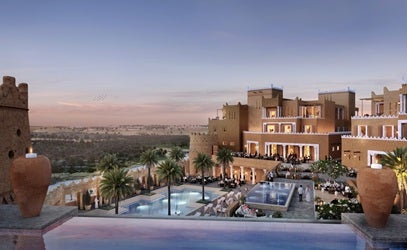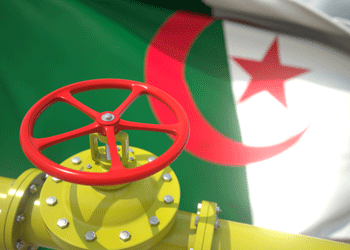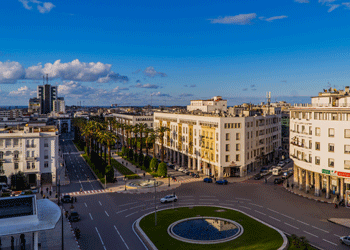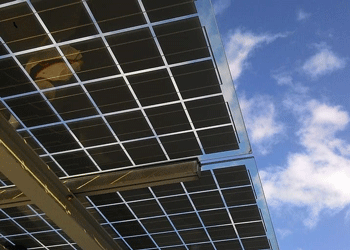Dubai invites metro extension interest
23 October 2023
Dubai’s Roads & Transport Authority (RTA) has invited contractors to express their interest by 24 November in bidding for the contract to expand the 90-kilometre Dubai Metro scheme.
The planned Blue Line will extend the existing Red and Green lines of the metro.
The Green Line extension will commence from its current terminus at Creek Station in the Jadaf area. It will cross over to the Dubai Creek Harbour development and continue through Ras al-Khor, International City, Dubai Silicon Oasis and Academic City before concluding near the Desert Rose project. The line will have 11 stations.
The Red Line extension will connect its existing terminus in Rashidiya to Mirdif City Centre and continue through Mirdif and Warqaa before joining the Green Line extension in International City.
The project was put on hold during the Covid-19 pandemic and was reactivated in early 2022, when UK-based Atkins and Grimshaw, US-based Parsons and France’s Egis restarted design work.
MEED previously reported that Dubai's RTA is expected to issue tender documents for the expansion of Dubai Metro in the fourth quarter of the year.
In October 2022, MEED reported that groups interested in bidding for the project had started to form. They included France’s Alstom with Spain’s FCC and Beijing-based China State Construction Engineering Corporation; Germany’s Siemens with India’s Larsen & Toubro, the local Alec and Belgium’s Besix; and China Railway Construction Corporation (CRCC) with China Civil Engineering Construction Company (CCECC).
Two billion commuters
Since its public launch on 9 September 2009, the number of riders that have used the Dubai Metro network has exceeded 2 billion, according to the RTA.
The Red Line has transported 1.342 billion commuters, while the Green Line has served 673.531 million passengers.
In 2022, the average daily number of riders on Dubai Metro exceeded 616,000.
The metro extension is part of Dubai’s plans to improve residents' quality of life by cutting journey times as outlined in its newly approved 20-minute city policy.
The last metro project to be completed in Dubai was Route 2020, which connected the Red Line to the Expo 2022 Dubai site. The AED10.6bn ($2.9bn) contract to design and build the line was awarded to a consortium of Alstom, Spain’s Acciona and Turkiye’s Gulermak.
Dubai Metro has also significantly impacted the real estate market, particularly properties within a 15-minute walking distance from metro stations. According to a recent report by CBRE, these properties tend to outperform the broader real estate market in terms of both property value and rental performance.
Further extensions are expected to create new opportunities for businesses and residents alike.
Exclusive from Meed
-
 World Cup 2030 galvanises Morocco construction
World Cup 2030 galvanises Morocco construction8 July 2025
-
 Diriyah prepares more superblock tenders
Diriyah prepares more superblock tenders8 July 2025
-
 Algeria’s industrial strategy builds momentum
Algeria’s industrial strategy builds momentum8 July 2025
-
 Maghreb economies battle trading headwinds
Maghreb economies battle trading headwinds8 July 2025
-
 Developers prepare Jordan solar EoIs
Developers prepare Jordan solar EoIs8 July 2025
All of this is only 1% of what MEED.com has to offer
Subscribe now and unlock all the 153,671 articles on MEED.com
- All the latest news, data, and market intelligence across MENA at your fingerprints
- First-hand updates and inside information on projects, clients and competitors that matter to you
- 20 years' archive of information, data, and news for you to access at your convenience
- Strategize to succeed and minimise risks with timely analysis of current and future market trends

Related Articles
-
 World Cup 2030 galvanises Morocco construction
World Cup 2030 galvanises Morocco construction8 July 2025

Morocco’s construction sector is gearing up for billions of dollars in projects as the North African nation continues to award contracts for building infrastructure for the 2030 Fifa World Cup, which it is co-hosting with Spain and Portugal.
Experience from past tournaments suggests that governments often leverage such events to advance broader economic goals. The World Cup brings fans from around the globe to enjoy a month-long festival of football.
After the 2022 tournament, Qatar reported that more than 1.4 million fans had visited the country during the event.
Morocco has made a strong head start in ensuring that the necessary infrastructure is ready for the tournament. According to data from regional project tracker MEED Projects, 2024 was the best year in the past decade for construction and transport contract awards in Morocco, with contracts worth over $3.6bn signed with local construction firms and international companies from South Korea, China, France and Spain.
So far this year, Morocco has already awarded $1.6bn-worth of contracts and appears to be on track to surpass last year’s figures. Projects worth over $3.5bn are currently in the bidding stage and are expected to be awarded by the end of the year.
Infrastructure development
Morocco was effectively confirmed as a host nation for the 2030 Fifa World Cup – alongside Spain and Portugal – in October 2023, after the trio emerged as the sole bidders for the event. The official selection was announced in December of the same year.
To prepare for the tournament, the Moroccan government quickly drafted plans to upgrade nationwide infrastructure, including airports, roads and the railway network.
Following the award of multimillion-dollar civil works contracts for the Kenitra-Marrakech high-speed railway network last year, Morocco’s minister of transport and logistics unveiled a MD96bn ($9.5bn) investment plan earlier this year to transform the country’s rail infrastructure by 2030.
In another major development, the ministry announced in January that Morocco will invest approximately MD42bn ($4.1bn) in airport expansion projects by 2030. The most immediate of these is the construction of a new terminal at the country’s largest airport – Mohammed V International airport in Casablanca – at an estimated cost of MD15bn ($1.6bn).
In June, 28 local and international firms expressed interest in the contract to build the new terminal.
The planned expansion will increase the airport’s capacity to 30 million passengers a year.
Additional investments are planned to modernise other airports – including those in Rabat, Tangier, Marrakesh, Fez, Tetouan and Agadir – in anticipation of increased passenger traffic during the 2030 World Cup.
Significant funding is also being directed towards improving the country’s road network. In March, Morocco announced plans to invest MD12.5bn ($1.2bn) in highway development projects across the country.
This announcement followed the award of approximately MD5bn ($540m) in contracts for nine construction packages related to the Rabat-Casablanca continental expressway.
This project is part of Morocco’s broader plan to upgrade public infrastructure in preparation for co-hosting the World Cup. The programme includes the expansion of over 1,000 kilometres of highways.
Stadium upgrades
Morocco began construction on its Grand Stade Hassan II stadium last year, awarding a $35m early works contract to local firm Societe Generale des Travaux du Maroc (SGTM). The stadium, with an estimated capacity of 115,000 seats, will be one of the venues for the 2030 Fifa World Cup.
In June, the client awarded a further $320m contract for the next phase of construction. The contract went to a joint venture of Travaux Generaux de Construction de Casablanca and SGTM.
The stadium is being built on a 100-hectare site in the El-Mansouria area of Benslimane Province, 38 kilometres north of Casablanca.
Several other stadium projects are also in the pipeline for upgrades ahead of the tournament. These include the renovation of six existing stadiums in Agadir, Casablanca, Fez, Marrakech, Rabat and Tangier.
Additionally, Morocco’s construction sector has a pipeline of over $2bn-worth of projects, with major developments in the hospitality sector. Notable schemes include the St Regis Marrakech Resort, Citadines Bab Hotel in Tangier, Hampton by Hilton Fes Golf and the Mogador Resort.
With construction and transport projects worth over $17bn currently in the pipeline, Morocco is expected to invest tens of billions of dollars in the near term to ensure the necessary infrastructure is in place for the 2030 Fifa World Cup.
The scale of the construction programme is set to provide substantial opportunities for contractors in the coming years. The initiative will also require close collaboration between local firms and experienced international contractors willing to participate in the effort.
MEED’s August 2025 report on the Maghreb also includes:
> ECONOMY: Maghreb economies battle trading headwinds
> INDUSTRY: Algeria’s industrial strategy builds momentum
> POWER & WATER: Slow year for Maghreb power and water awardshttps://image.digitalinsightresearch.in/uploads/NewsArticle/14220755/main.gif -
 Diriyah prepares more superblock tenders
Diriyah prepares more superblock tenders8 July 2025

Saudi gigaproject developer Diriyah Company is preparing to tender more superblock packages this quarter, following the receipt of prequalification statements from interested firms last week.
MEED understands that notices were issued in mid-June for packages that include the Waldorf Astoria superblock and the Edition superblock, both located in the second phase of the Diriyah Gate development (DG2).
The Waldorf Astoria superblock is a mixed-use development featuring the Waldorf Astoria Residences & Hotel, commercial and residential facilities and office spaces.
The Waldorf Astoria Hotel is a 200-key property, whereas Waldorf Astoria Residences will offer over 46 branded residences.
The project is located along the Grand Boulevard South and the Northern Arterial Road in the Boulevard Northwestern district at DG2.
The prequalification statements for this package were submitted on 29 June.
Prequalification statements for the Edition superblock were submitted on 2 July.
This package comprises a mix of residential, commercial and office spaces, including the 200-key Edition Hotel and 150-key Equinox Hotel.
The project is situated between King Khalid Road and the Grand Boulevard within the Boulevard East district in DG2.
Last week, MEED reported that Diriyah Company had received prequalification statements from firms interested in constructing the upcoming Radisson Red superblock in DG2.
The Radisson Red superblock comprises a hotel, residential apartments, retail facilities, commercial office spaces and a park.
The project is situated in the Boulevard East district, between King Khalid Road and the Grand Boulevard in Diriyah.
Diriyah also tendered a contract in April to build the new iconic museum in the DG2 area.
The same month, MEED exclusively reported that the client had awarded an estimated SR4bn ($1.1bn) contract for a utilities relocation package for the King Saud University (KSU) project located in DG2.
The contract was awarded to the joint venture of Beijing-headquartered China Railway Construction Corporation and China Railway Construction Group Central Plain Construction Company.
Also in April, MEED reported that the company had awarded an estimated SR5bn ($1.3bn) construction deal to build the Royal Diriyah Opera House.
The contract was awarded to a joint venture of local firm El-Seif Engineering & Contracting, Beijing-headquartered China State Construction Engineering Corporation and Qatari firm Midmac Contracting.
Tendering activity is progressing on several other major schemes at Diriyah, including the King Khalid Road project, which passes through the development. The client received bids from firms in the second week of April for the main construction works on this project.
The client is also expected to finalise the contract award shortly for the Arena Block assets in the Boulevard Southwest section in the DG2 area.
Diriyah gigaproject
The Diriyah masterplan envisages the city as a cultural and lifestyle tourism destination. Located northwest of Riyadh’s city centre, it will cover 14 square kilometres and combine 300 years of history, culture and heritage with hospitality facilities.
The company awarded several significant contracts last year, including three contracts worth over SR21bn ($5.5bn). These included an estimated $2bn contract awarded to a joint venture of El-Seif Engineering & Contracting and China State to build the North Cultural District.
In July last year, Diriyah also awarded a $2.1bn package to a joint venture of local contractor Albawani and Qatar’s Urbacon to construct assets in the Wadi Safar district of the gigaproject.
Then in December, Diriyah Company awarded an estimated SR5.8bn ($1.5bn) contract to a joint venture of local firm Nesma & Partners and local branch of Man Enterprise for its Jabal Al-Qurain Avenue cultural district, located in the northern district of the Diriyah Gate project.
Once complete, Diriyah will have the capacity to accommodate 100,000 residents and visitors.
https://image.digitalinsightresearch.in/uploads/NewsArticle/14219991/main.jpg -
 Algeria’s industrial strategy builds momentum
Algeria’s industrial strategy builds momentum8 July 2025

Project activity across Algeria’s energy, industrial and manufacturing sectors is steadily building as the country focuses on a vertically integrated strategy that leverages the exploitation of its natural resources.
The country is making steady progress on projects to extract deposits of gas, lithium, iron and phosphates.
At the same time, it is progressing projects that use these natural resources to produce high-value products within the country, rather than simply exporting the raw materials.
The projects utilising raw materials within Algeria include a wide range of iron and steel processing facilities, fertiliser plants and factories to produce cars.
Upstream gas
Last month, Algeria awarded five out of the six oil and gas exploration licences it offered during its 2024 bidding round, a move viewed as a success by stakeholders in the country’s energy sector.
The companies that were awarded blocks included France’s TotalEnergies, state-owned QatarEnergy, Italy’s Eni and PTTEP of Thailand.
Commenting on the licensing round, one industry source said: “Successfully engaging with large international oil companies that have significant technical and financial resources is a big step forward for Algeria’s oil and gas sector.”
The latest bid round was the first to be held under Law 13-19, Algeria’s current oil and gas investment law, which was issued on 11 December 2019.
The 2019 law replaced a previous law created in 2005, which governed the last bid round in 2014.
During the previous bid round, only four blocks were awarded out of the 31 offered.
If the 2024 bidding round had been unsuccessful like the 2014 bidding round, this would have been a major setback to the country’s oil and gas strategy and raised significant concerns about the suitability of the 2019 law that governs licensing deals.
The latest licensing round was followed by meetings between Algeria’s President Abdelmadjid Tebboune and delegations from US-based oil and gas companies ExxonMobil and Chevron.
Awarding the licences and holding talks with Exxon and Chevron sets the scene for further upstream development projects in Algeria and will potentially boost domestic gas production in the country.
Successfully engaging with large international oil companies that have significant technical and financial resources is a big step forward for Algeria’s oil and gas sector
Industry sourcePhosphates push
Extractive projects in Algeria’s mining sector are also making steady progress.
One of the biggest mining projects in the country is the Bled El-Hadba phosphate project, which is estimated to be worth $7bn.
The Bled El-Hadba phosphate mine has over 1.2 billion tonnes of estimated total reserves, including 800 million tonnes of estimated exploitable reserves, making it one of the biggest mines of its kind in the world.
A joint venture deal to develop the project was signed in March 2022 between four Algerian and Chinese companies.
The resulting joint-stock company is called Algerian Chinese Fertilisers Company (ACFC) and the project is expected to ultimately produce 5.4 million tonnes of fertilisers a year from the Bled El-Hadba phosphate mine in the eastern Algerian region of Tebessa.
ACFC was established by the Algerian companies Asmidal and Manadjim El-Djazair (Manal), which own a 56% stake in the company, and the Chinese groups Wuhuan and Tianan, which hold the remaining 44% stake.
Since the deal was signed, the project has seen good progress.
Last month, Saipem was awarded the front-end engineering and design (feed) contract related to the project.
Additionally, the Oued Keberit phosphate production and processing complex, which forms part of the $7bn project and will process phosphates extracted from the mine, is on track to come online in 2027, according to industry sources.
Iron mining
Another key mining project in the country is the Gara Djebilet iron ore mine in Algeria’s western Tindouf province.
The Gara Djebilet mine was commissioned in July 2022, with plans to produce 2 million tonnes a year (t/y) by 2026.
Officials have said they want to boost this to 50 million tonnes of iron ore annually by 2040.
It is expected that boosting production at the facility could require between $7bn and $10bn in investment.
Gara Djebilet is understood to hold the world’s largest iron ore reserves, with an estimated 3.5 billion tonnes at the location, of which around 1.7 billion tonnes are available for exploitation.
The mine is expected to bolster Algeria’s steel industry by reducing the need for iron imports.
Car manufacturing
Low-cost steel is expected to support the country’s expanding automotive sector, which uses steel to produce parts.
In March 2025, Great Wall Motor, one of China’s top 10 car manufacturers, announced plans to build its first factory in Algeria, joining other companies in the country, including Fiat, Peugeot and Kia.
Last November, the Algerian Ministry of Industry & Pharmaceutical Production announced that it had granted permits for six new vehicle manufacturing factories in the country.
In March 2023, the carmaker Stellantis announced plans to spend more than €200m ($213m) to manufacture several Fiat models in Algeria.
The plans involved the construction of a plant, which is yet to come online.
Stellantis stated that it anticipates the plant will generate nearly 2,000 local jobs and have an annual production capacity of 90,000 vehicles upon completion.
Petrochemicals production
Algeria’s growing automotive industry is also expected to use plastics derived from petrochemicals that are produced in the country using Algerian natural gas as a feedstock.
UK-based engineering contractor Petrofac and its partner China Huanqiu Contracting & Engineering Corporation (HQCEC) are currently executing a petrochemicals project in Algeria, which is valued at approximately $1.5bn.
Petrofac and HQCEC signed the engineering, procurement and construction (EPC) contract for the Algerian petrochemicals project in June 2023.
The project is being developed in the Arzew Industrial Zone to the west of Algiers and the contract was signed with STEP Polymers, a wholly owned subsidiary of Algeria’s state-owned oil and gas company Sonatrach.
When the contract was signed, Petrofac said that its portion of the project was valued at about $1bn.
The project’s scope includes designing and building two major integrated processing units.
It includes the delivery of a new propane dehydrogenation (PDH) unit and polypropylene production unit, as well as associated utilities and infrastructure for the site.
It is expected to produce 550,000 tonnes of polypropylene a year.
Additionally, plans are being developed for zinc production projects in the country.
In November last year, Western Mediterranean Zinc (WMZ), an Algerian-Australian joint venture, signed a $336m contract with Sinosteel Equipment & Engineering Company (Sinosteel MECC) to develop the Tala Hamza zinc project in Algeria’s Bejaia Province.
WMZ is a joint venture of Australian Securities Exchange (ASX)-listed Terramin, which has a 49% stake, and Algerian state-owned companies Enterprise Nationale des Produits Miniers Non-Ferreux et des Substances Utiles, which owns 48.5%, and Office National de Recherche Geologique et Miniere, which owns 2.5%.
The project scope included the development of a mine with the capacity to produce two million tonnes a year of zinc and a processing plant with the capacity to process the same volume of material.
It is expected that the production of zinc will support the country’s battery manufacturing industry, which in turn will support the production of electric cars.
Fertiliser focus
The country’s fertiliser sector is expected to expand as phosphate production is ramped up.
Earlier this month, MEED revealed that Sonatrach was developing a project that will expand the country’s fertiliser plant located in Arzew.
Sonatrach has not publicly said when it expects to issue the invitation to bid for the main contract for the project.
The original $2.4bn contract to develop the Arzew fertiliser complex was executed by a joint venture of South Korea’s Daewoo E&C and Japan’s Mitsubishi Corporation.
The joint venture won the contract in April 2008 and completed the facility in April 2013.
Steady development
By making steady progress with an integrated strategy that leverages the exploitation of raw materials to support the production of higher-value exports, Algeria is creating an industrial environment that presents significant opportunities for companies across multiple sectors.
If the country’s relative political stability continues, more foreign investors will likely become involved in projects within the country, and the country’s project market will continue to expand.
MEED’s August 2025 report on the Maghreb also includes:
> ECONOMY: Maghreb economies battle trading headwinds
> POWER & WATER: Slow year for Maghreb power and water awardshttps://image.digitalinsightresearch.in/uploads/NewsArticle/14209218/main.gif -
 Maghreb economies battle trading headwinds
Maghreb economies battle trading headwinds8 July 2025

Investors in Morocco’s stock market are enjoying a strong bull run. In the first six months of this year, the Moroccan All Shares Index gained 24%, following a 22% rise last year. It hit a record close of 18,690 points in early June this year and, after a brief dip, was growing strongly again in early July, threatening to break through the 19,000-point barrier for the first time.
A combination of low interest rates and strong performances from local companies is helping to boost the market. There is also optimism sparked by the country’s role as a co-host of the 2030 football World Cup (alongside Spain and Portugal) and all the infrastructure spending that will flow from that.
The country’s relative economic strength is also reflected in project activity. Of the 749 projects currently planned or under way across the Maghreb region, 322 are in Morocco, according to data from MEED Projects. The leading sectors are power and water, transport and construction.
There are, though, reasons for caution. While Morocco’s stock market traders may have been doing well, all the Maghreb economies are facing some tricky international trading conditions, which could become more severe in the coming months and years.
Of the 749 projects currently planned or under way across the Maghreb region, 322 are in Morocco, according to data from MEED Projects
Global headwinds
Weak economic conditions in Europe, the region’s most important trading partner, pose a particular threat. Key markets, such as France, Germany and Italy, are experiencing anaemic growth rates, which could lead to softer demand for the Maghreb region’s exports, as well as weaker tourism and investment flows across the Mediterranean.
The imposition of tariffs by US President Donald Trump is also having a negative impact. However, the chaotic way in which the policy is being enacted means it is unclear just how much pain the duties might ultimately cause. Algeria, Libya and Tunisia look set to be worst affected, with tariff rates of 28-31% on their exports to the US, compared to 10% for Morocco.
The region’s direct trade with the US is relatively limited, but if higher tariffs dent global demand, that could have a larger impact on more export-oriented economies such as Morocco and Tunisia.
Oil market trends are likely to add to the pressure on Algeria and Libya this year, as producers continue to ramp up output. On 5 July, the eight Opec+ countries – which include Algeria, Saudi Arabia and the UAE – agreed to produce an additional 548,000 b/d from August. That will put further downward pressure on oil prices.
“A sharp drop in activity in emerging markets will be a negative for global oil demand for the rest of 2025 and into 2026,” said Edward Bell, chief economist of the Dubai-based bank Emirates NBD on 7 July. “Just the fear of policy uncertainty will be enough to limit investment.”
Other issues are also hard for the Maghreb countries to control. For example, the frequent droughts of recent years have dented agricultural activity and exports.
Among other challenges, most governments are running budget deficits and are struggling to create enough jobs for their growing populations. Unemployment in Morocco remains at around 13%, according to the IMF. It is in double figures in neighbouring countries too, according to the International Labour Organisation; Libya’s unemployment rate is probably nearer 20%.
Inward FDI into Algeria rose by 18% last year to reach $1.4bn, while in Tunisia it was up 21% to $936m and in Morocco it increased 55% to $1.6bn
Rising resilience
The Maghreb region is nevertheless showing signs of resilience, despite the various negative pressures. Inflation has been easing back in most countries in recent years and foreign direct investment (FDI) has been growing strongly.
According to the latest Unctad World Investment Report, inward FDI into Algeria rose by 18% last year to reach $1.4bn, while in Tunisia it was up 21% to $936m and in Morocco it increased 55% to $1.6bn.
A few industries are attracting some large investment deals, with Gulf money often to the fore. The UAE, for example, is helping to finance a 7,000-kilometre, $25bn gas pipeline from Nigeria to Morocco. A consortium of the UAE-based Masdar, Egypt’s Infinity and Germany’s Conjuncta is also backing a $34bn green hydrogen project in neighbouring Mauritania.
More recently, albeit on a far smaller scale, the Saudi Fund for Development signed a $38m loan agreement on 27 June this year to set up the Oasis Hub Project in southern Tunisia, which includes rural housing, infrastructure and agriculture schemes.
Some big projects have come unstuck, though. A plan by UK-based Xlinks to export power from Morocco to the UK via a 4,000km subsea cable has lost the support of the London government. On 26 June, junior energy minister Michael Shanks told the UK parliament it had decided the project was “not in the UK national interest at this time”.
There was disappointment in Morocco at the turn of events. In the short term, however, economic growth this year is expected to be a healthy 3.9% in Morocco and 3.5% in Algeria – equal to or better than last year, according to IMF data. Mauritania is expected to grow by 4.4%, which is less than in recent years, but still ahead of its neighbours.
Tunisia is expected to lag behind, at just 1.4%, as the country’s authoritarian leadership struggles to come up with a viable economic model. A draft of the 2026-30 development plan has been promised before the end of the year by the Ministry of Economy and Planning secretary-general, Faouzi Ghrab. Libya’s outlook depends on domestic political factors that look as far from resolution as ever.
Morocco, meanwhile, is intent on solidifying its position as a regional industrial and financial hub, with its thriving stock market serving as an important lever. It is still ranked as a frontier market by index company MSCI, but is hoping for promotion to emerging market status.
The launch of derivatives trading in May is part of efforts to attract more liquidity and secure that higher ranking. Some simpler reforms might also be useful – MSCI pointed out in a June report that stock market information was not always readily available in English, which hindered its accessibility.
Yet, if the market continues to grow as rapidly as it has recently, investors are likely to find a way to address such shortcomings.
https://image.digitalinsightresearch.in/uploads/NewsArticle/14219130/main.gif -
 Developers prepare Jordan solar EoIs
Developers prepare Jordan solar EoIs8 July 2025

The Jordanian Ministry of Energy & Mineral Resources has extended the deadline to 12 August for the submission of expressions of interest (EoIs) for a contract to build and operate a new 200MW solar plant.
The solicitation of interest was issued by the ministry in mid-May with an original deadline of July.
It is unclear why the deadline has been extended, given the relative conciseness of the required documents. However, it is likely that the interested developers are still forming joint ventures in advance of submitting any EoI.
The photovoltaic facility’s procurement is unusual in that no specific land allocation has yet been set by the government. Instead, approved applicants will sign an initial memorandum of understanding (MoU) with the ministry, under which they will be requested to identify a suitable site within a designated location in advance of final proposal preparation and submission.
In parallel, the MoU calls for them to proceed with measurement campaigns, feasibility studies, technical integration plans for connecting to the transmission network, as well as other preparatory and due diligence work, such as negotiating access to land and financing for the proposed project.
Proposed projects must cover local electricity demand only, with no provision for electricity export.
The developer or developer group which subsequently submits the lowest proposed tariff will be named the preferred bidder for the independent power plant (IPP) project, which has a concession period of between 20 and 25 years under the build-own-operate (BOO) contractual model.
Jordan has a total electricity generation installed capacity of about 7.1GW as of 2023, according to data published by the International Renewable Energy Agency (Irena).
Solar and wind power plants account for over 30 per cent of the total installed capacity, which is one of the highest, if not the highest, renewable energy installed capacities in the Middle East and North Africa region, compared to overall generation capacity.
Work has been under way to enable the successful integration of renewable power into the electricity grid.
According to MEED Projects data, roughly $3.3bn-worth of power projects are under way or planned in Jordan, with generation facilities accounting for 59% of the total.
MEED’s July 2025 report on Jordan includes:
> ECONOMY: Jordan economy nears inflection point
> GAS: Jordan pushes ahead with gas plans
> POWER & WATER: Record-breaking year for Jordan’s water sector
> CONSTRUCTION: PPP schemes to drive Jordan construction
> DATABANK: Jordan’s economy holds pace, for nowhttps://image.digitalinsightresearch.in/uploads/NewsArticle/14219682/main.jpeg


